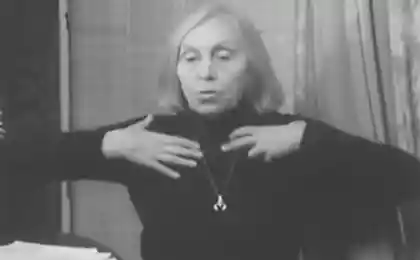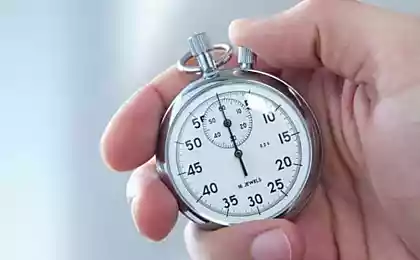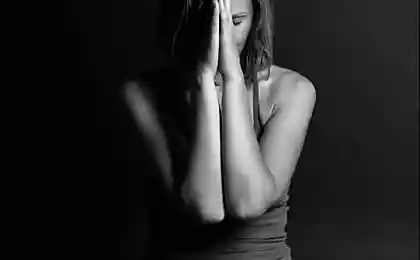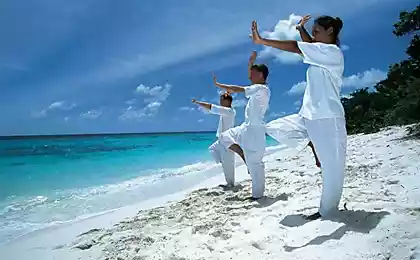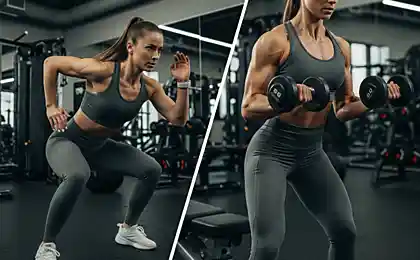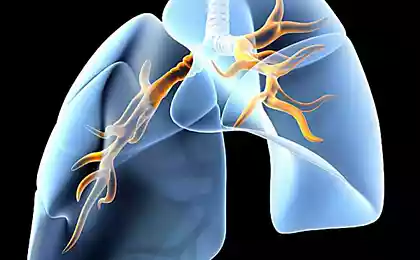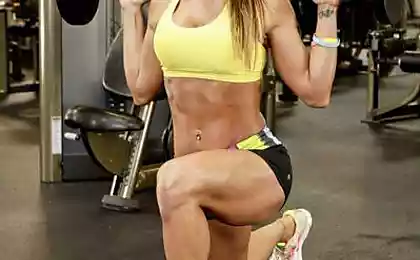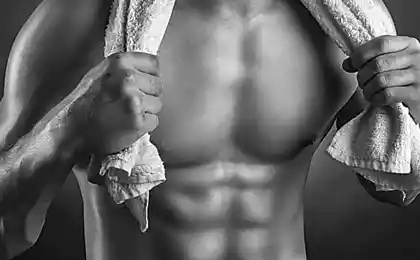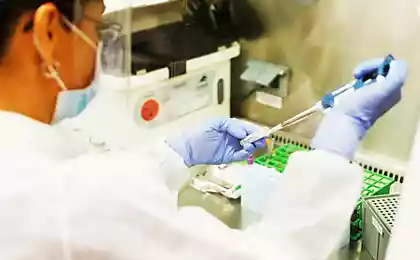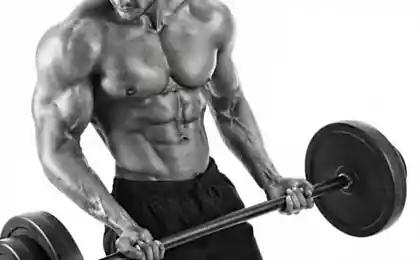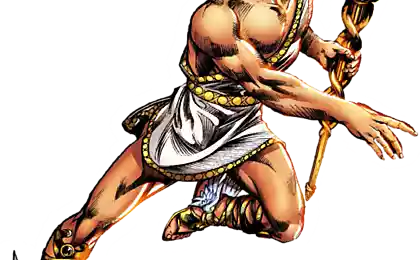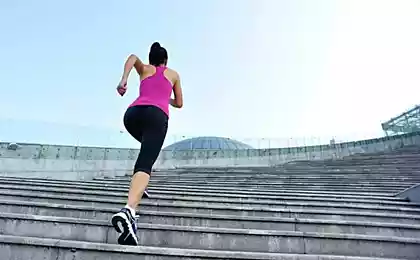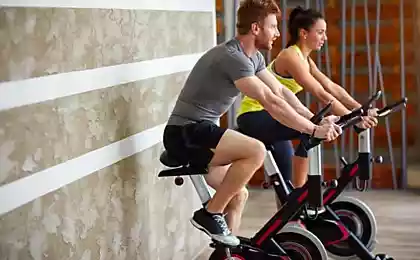190
Exercises for rehabilitation after coronavirus, giving a good effect
Those who have come face to face with COVID-19 know how important the rehabilitation process is. Especially breathing exercises after coronavirus. It does not matter where the person was during the illness. Even after a long stay in the home walls, the body needs to be restored.
Today's edition. "Site" share with you breathingIt will help to restore the lungs after a serious illness. In this we will help the rehabilitation doctor Din Seyfullin from Almaty.
In order not to feel shortness of breath after an illness and restore respiratory function, it is important to engage in regular breathing exercises. In today’s collection you will find 10 simple exercises. Repeat each of them as you can. It will get easier and easier for you every time.
Diaphragmatic breathing Diaphragmatic breathing develops the lower part of the lungs. To train him, you'll need to work your stomach. So, in a sitting position, place one hand on your chest and the other on your stomach just above your navel. Take a deep breath, you will feel the diaphragm lower and the stomach come out. Then exhale and draw in the stomach so that the diaphragm rises.
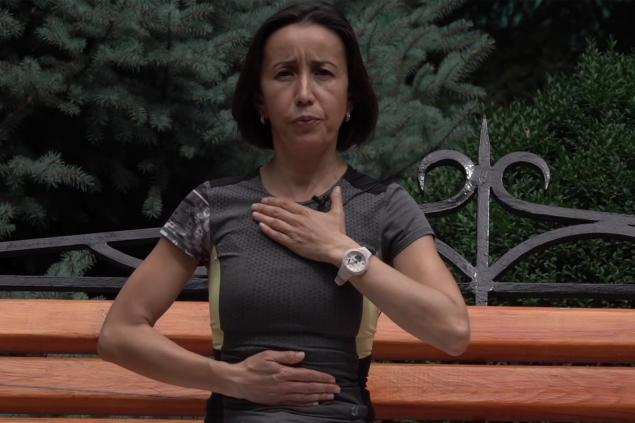
Remember that breathing is always done with your nose. Exhale through slightly compressed lips and teeth. Ideally, this exercise should be done. several times a day with 10 repetitions.
Lower Breathing Next Exercise It may differ depending on the size of the person.. Dina Seyfullin shares two options at once. First, put your hands on your lower ribs. On inhalation, they should inflate, and on exhalation - shrink. But you need to help them a little with your hands.
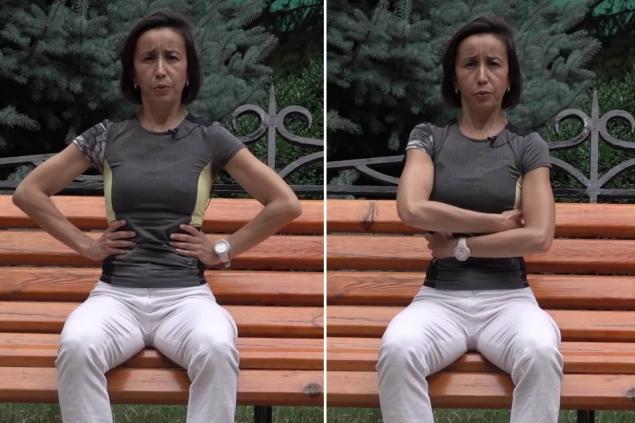
In the second case, you do the same thing, but you wrap your arms around you like you're hugging. Such an exercise Repeat from 5 to 10 times.
Medium Breathing There are also two options. Put your hands on the middle ribs, take a deep breath. The ribs should swell again, and in the exhalation - squeeze with your hands. Hold yourself with both hands, as in the previous exercise. But the hands should be on the middle ribs.
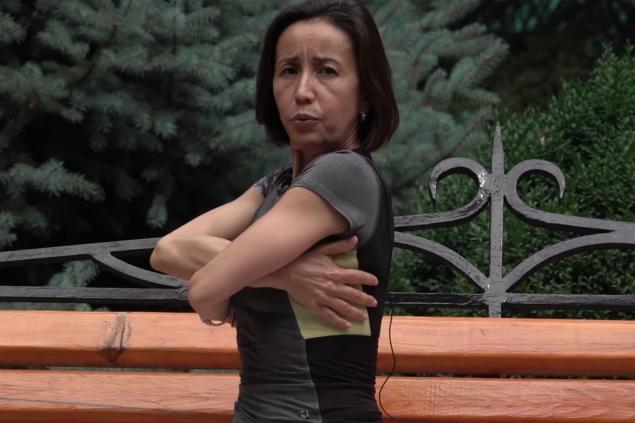
Combination of two types of breathing Put your hands on your shoulders. On inhalation, raise your bent arms to the sides, stretching the pectoral muscles. And at the exit, lower your hands, slightly pressing the ribs with your shoulders. Repeat the exercise 5 to 15 times if possible. When it's easier for you to do it, you can speed it up.
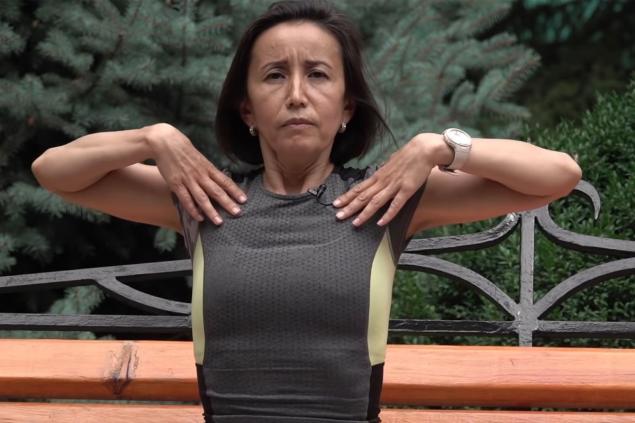
The next exercise involves one half of the chest. This is necessary to better stretch the respiratory muscles. On inhalation, stretch your left arm up along the body above your head, stretching the entire half of your chest. On exhalation, pull your left hand back to the chest, squeezing it. In fact, it looks like a kind of spring.
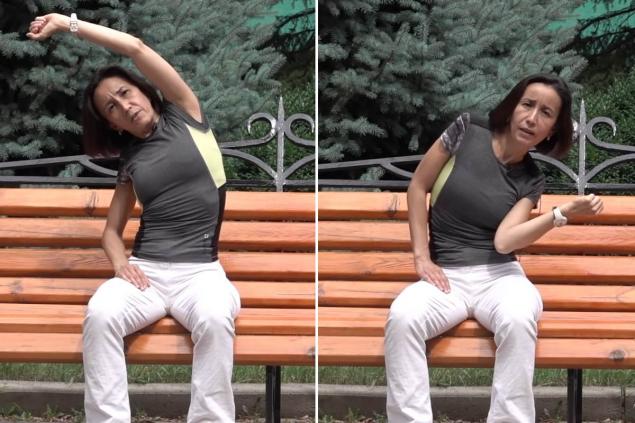
Repeat the exercise on the left and right sides 5 to 10 times. But watch your condition. If it is difficult for you, do not burden yourself with frequent repetitions. It will be enough to start 3-5 times.
Synchronization of respiratory muscles So, place both hands horizontally in front of the chest. Then inhale them to the sides, connecting the shoulder blades and stretching the pectoral muscles. Continue to exhale your hands in front of you cross to stop. In addition, the pectoral muscles are tightened at the exit and the abdominal muscles are drawn in.
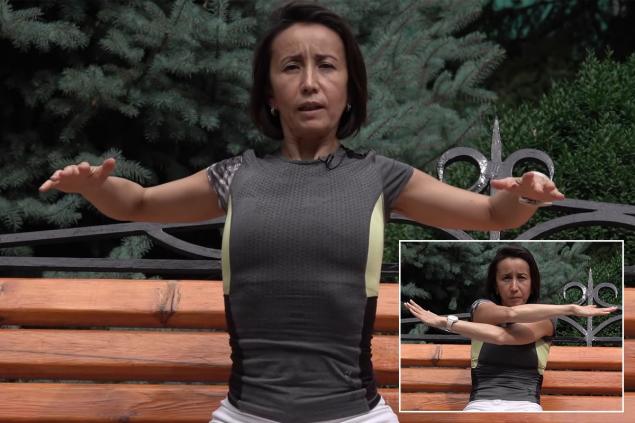
On inhalation, raise your left hand, bent at the elbow up and to the side, stretching the pectoral and intercostal muscles. At the exit, lower your hand to the opposite knee, trying to touch it. Don't forget to draw in the abdominal muscles as you exhale. Repeat the exercises on the left and right sides 10-15 times.
417060
The next exercise is aimed at completely filling the lungs with air. Raise your arms and spread them wide. And at the exit, join your hands in front of you, slightly rounding your back and squeezing the chest.
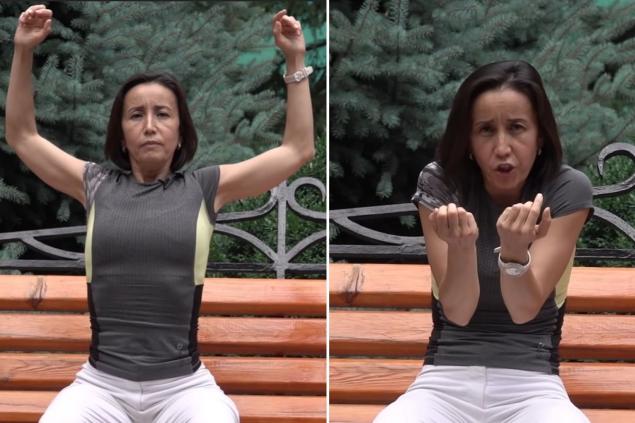
Exercise for the diaphragm This exercise involves the muscles of the chest and diaphragm. So, inflate your stomach inhale, lifting your arms up and joining the shoulder blades. Turn your hands outside. Stretching your shoulder blades, pulling your stomach in and turning your arms back.
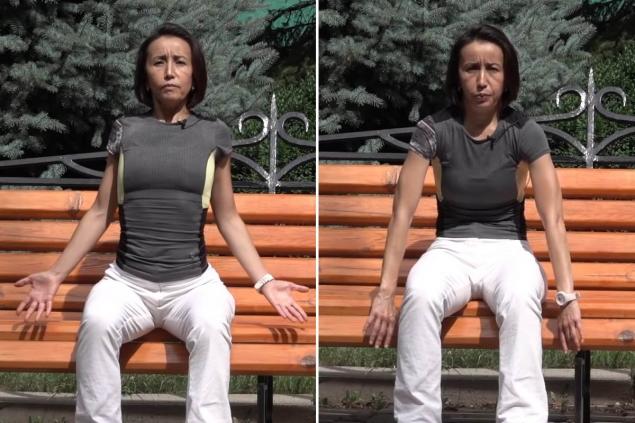
This exercise is suitable for those who have already managed to regain strength after an illness. Make a big circle with your hands. Then pull your hands down on the exhale, pressing them against the ribs. In this case, the exhalation should be stronger, forced.
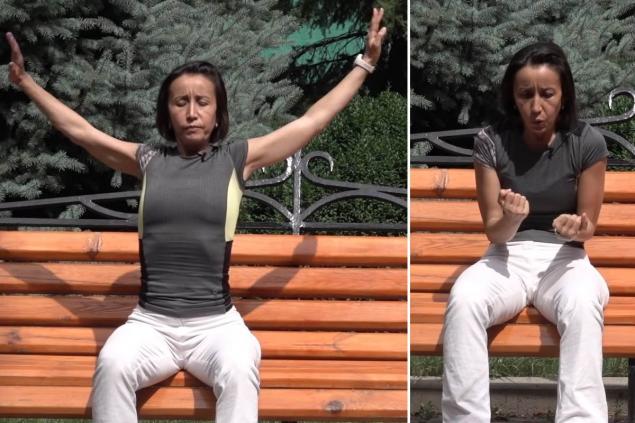
The same exercise can be done in the opposite direction. The inhalation starts from the bottom, you just need to make a circle with your hands. But when you exhale, you join your arms in front of you. To complete this complex, simply reach up inhale and lower your arms as you exhale. You can also pull the ribs to the right and left sides.
We share a video in which you can better familiarize yourself with the technique of performing exercises.
https://www.youtube.com/watch? v=PqxlsYnNCzE
Dean Seifullin recommends repeat this complex for 2 months. This is true for people who have survived pneumonia and more than 50% of the lungs. Exercises should be performed sitting. First of all, you're not gonna pull your back muscles. Secondly, you won't get tired of your lower back. In addition, in a sitting position, it is much easier to make slopes and twists.
Breathing gymnastics after coronavirus It is very important for the complete recovery of the body. Share this article with your family and friends, it may be useful to them. And of course, take care of yourself!
Today's edition. "Site" share with you breathingIt will help to restore the lungs after a serious illness. In this we will help the rehabilitation doctor Din Seyfullin from Almaty.
In order not to feel shortness of breath after an illness and restore respiratory function, it is important to engage in regular breathing exercises. In today’s collection you will find 10 simple exercises. Repeat each of them as you can. It will get easier and easier for you every time.
Diaphragmatic breathing Diaphragmatic breathing develops the lower part of the lungs. To train him, you'll need to work your stomach. So, in a sitting position, place one hand on your chest and the other on your stomach just above your navel. Take a deep breath, you will feel the diaphragm lower and the stomach come out. Then exhale and draw in the stomach so that the diaphragm rises.

Remember that breathing is always done with your nose. Exhale through slightly compressed lips and teeth. Ideally, this exercise should be done. several times a day with 10 repetitions.
Lower Breathing Next Exercise It may differ depending on the size of the person.. Dina Seyfullin shares two options at once. First, put your hands on your lower ribs. On inhalation, they should inflate, and on exhalation - shrink. But you need to help them a little with your hands.

In the second case, you do the same thing, but you wrap your arms around you like you're hugging. Such an exercise Repeat from 5 to 10 times.
Medium Breathing There are also two options. Put your hands on the middle ribs, take a deep breath. The ribs should swell again, and in the exhalation - squeeze with your hands. Hold yourself with both hands, as in the previous exercise. But the hands should be on the middle ribs.

Combination of two types of breathing Put your hands on your shoulders. On inhalation, raise your bent arms to the sides, stretching the pectoral muscles. And at the exit, lower your hands, slightly pressing the ribs with your shoulders. Repeat the exercise 5 to 15 times if possible. When it's easier for you to do it, you can speed it up.

The next exercise involves one half of the chest. This is necessary to better stretch the respiratory muscles. On inhalation, stretch your left arm up along the body above your head, stretching the entire half of your chest. On exhalation, pull your left hand back to the chest, squeezing it. In fact, it looks like a kind of spring.

Repeat the exercise on the left and right sides 5 to 10 times. But watch your condition. If it is difficult for you, do not burden yourself with frequent repetitions. It will be enough to start 3-5 times.
Synchronization of respiratory muscles So, place both hands horizontally in front of the chest. Then inhale them to the sides, connecting the shoulder blades and stretching the pectoral muscles. Continue to exhale your hands in front of you cross to stop. In addition, the pectoral muscles are tightened at the exit and the abdominal muscles are drawn in.

On inhalation, raise your left hand, bent at the elbow up and to the side, stretching the pectoral and intercostal muscles. At the exit, lower your hand to the opposite knee, trying to touch it. Don't forget to draw in the abdominal muscles as you exhale. Repeat the exercises on the left and right sides 10-15 times.
417060
The next exercise is aimed at completely filling the lungs with air. Raise your arms and spread them wide. And at the exit, join your hands in front of you, slightly rounding your back and squeezing the chest.

Exercise for the diaphragm This exercise involves the muscles of the chest and diaphragm. So, inflate your stomach inhale, lifting your arms up and joining the shoulder blades. Turn your hands outside. Stretching your shoulder blades, pulling your stomach in and turning your arms back.

This exercise is suitable for those who have already managed to regain strength after an illness. Make a big circle with your hands. Then pull your hands down on the exhale, pressing them against the ribs. In this case, the exhalation should be stronger, forced.

The same exercise can be done in the opposite direction. The inhalation starts from the bottom, you just need to make a circle with your hands. But when you exhale, you join your arms in front of you. To complete this complex, simply reach up inhale and lower your arms as you exhale. You can also pull the ribs to the right and left sides.
We share a video in which you can better familiarize yourself with the technique of performing exercises.
https://www.youtube.com/watch? v=PqxlsYnNCzE
Dean Seifullin recommends repeat this complex for 2 months. This is true for people who have survived pneumonia and more than 50% of the lungs. Exercises should be performed sitting. First of all, you're not gonna pull your back muscles. Secondly, you won't get tired of your lower back. In addition, in a sitting position, it is much easier to make slopes and twists.
Breathing gymnastics after coronavirus It is very important for the complete recovery of the body. Share this article with your family and friends, it may be useful to them. And of course, take care of yourself!
Autumn poppy pie, from which even a pampered husband spoils cakes
Names of traitors who until old age will stubbornly do their job
